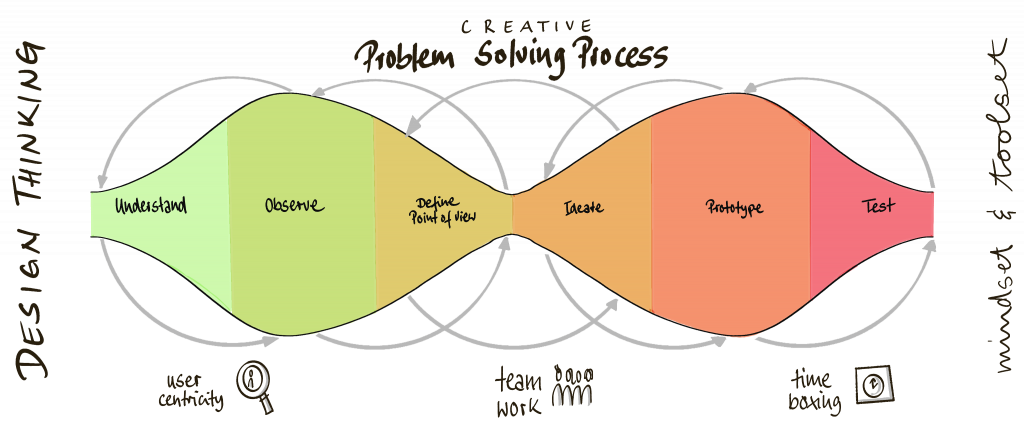Design Thinking and Visual Thinking – a perfect fit?
In a recent interview Hiromi Hara, Managing Director at SAP Labs Japan, speaks about her experience with applying the design thinking method with the help of visualization.
Hara explains that design thinking is not primarily about problem solving, rather about unveiling complex problems and getting better insight in the root cause of issues, hence the importance of the expression of individual perception and the comprehensible yet memorable depiction of thinking processes.
What could be better for such a job than Visualization?
SHARE ARTICLE
Full interview
What problems or opportunities can design thinking be used for?
Design thinking is not intended for finding solutions to problems that are clear, that’s easy. Its rather intended to help unveil complex problems and getting better insight in the root cause of issues that aren’t clear yet.
What do you think are common misconceptions about design thinking? Often when people learn new methods, they see it as extra work, do you think this is also the case with design thinking?
The biggest misconception is probably that it is seen as too playful and unserious. That is also what scares people away. Another reason why people are hesitant to use such strategies is that they find them too time consuming. They want to fix their problems faster and more “efficiently”, design thinking however is a process where you find the issue and solve it together encouraging collaborative creativity.
Where do you think visualization helps the design thinking process?
One example that comes to mind is the very beginning of the design thinking progress, when the problem is still vague and indefinite. That’s when I ask participants of the workshop to draw pictures of the conceptual understanding of the problem. For example, as vehicles. A car they draw might have fantastic organization, be beautiful, but it doesn’t move forward. This is an analogy for the organization’s problems.
Drawing their perception of the issue helps them open up, since some people are more hesitant when expressing themselves verbally.
Visuals are also used when making prototypes for solutions, in form of storyboards or blueprints.
Do people usually feel encouraged to draw?
No, not at all, many feel uncomfortable doing something they aren’t necessarily good at. Which is why I give them a short 20-minute drawing lesson, so they feel more comfortable afterwards.

What was one moment where you felt especially happy with the results of the appliance of the design thinking method?
One case where I didn’t necessarily feel happy, rather than successful with gaining insight in an issue, was when we helped children that suffer from obesity. We were trying to help the obese kids who were living in temporary housing after the earthquakes in the Tohoku area. Pretty quickly we found one reason for the obesity being the sudden lack of space for movement and exercise. However, tackling that wouldn’t be the solution. We found that an even bigger factor in this change of health was the mental situation: the kids were struggling to express their feelings of unhappiness, stress or even anxiety to their family members and helpers, because they were already receiving so much help. After that realization we managed to come up with a couple of ideas to tackle this mental blockade and help these children.
These examples are truly fascinating.
Has there been a case where using visuals helped achieve this kind of success? Visuals are sometimes misconceived as too playful or purely fun, yet I believe that when working in business the use of visuals has a lot of value and benefits. Have you ever had a moment where you felt , ‘oh wow, these visuals really made a difference!’
Recently in a talk with our executive SAP Japan’s members about our future plans and visions, I used a lot of visuals to summarize what had been said. This helps memorizing what has been said and breaking down these topics that can be very conceptual and complex.
Do you think Bikablo, as a visualization method, could help people, in particular when applying the design thinking strategy?
I do believe that visualization helps people with the design thinking strategy, the participants as well as the facilitator. In our workshops it is important that the participants get out of their usual business situation, and instead develop a new mindset in a different atmosphere. Visuals can help understand faster and remember better. It is a nice an fun way to help people understand important information, all in all it’s a nice way to communicate with each other.
Thank you so much for your time.